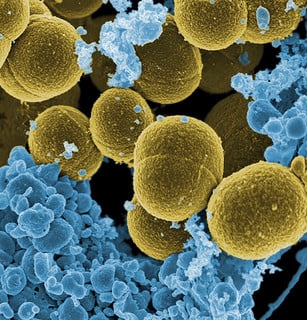Question:
How to perform isolation of plasmid DNA through Alkalyne Lysis?
The Protein Man Says:
The process of alkaline lysis is most commonly employed in the field of molecular biology to isolate DNA plasmids from small volumes of bacteria. Ever since its inception, alkaline lysis has been the most preferred method of plasmid DNA isolation and extraction. This is very much understandable since the process is one of the fastest and most reliable methods that can be used in isolating plasmid DNA from bacterial samples.
To better understand how it works, here is the step-by-step procedure involved in the process.
 Alkaline Lysis and Plasmid DNA Isolation Step-by-Step
Alkaline Lysis and Plasmid DNA Isolation Step-by-Step
-
Cultivate bacterial sample.The process starts with the cultivation of the bacterial sample that contains your plasmid DNA. An antibiotic is usual incorporated in the growth media and the plasmid DNA will pass resistance to the antibiotic on to the bacteria. Once sufficient growth has been observed, the cells are removed from the growth medium through centrifugation and the supernatant is eventually discarded. Your cells will be pelleted at the end of this step.
-
Resuspend the pelleted cells in buffer solution.Resuspending the cells in a solution containing Tris and EDTA chelates divalent metal ions such as magnesium and calcium. This destabilizes the cell walls and inhibits the action of DNases. Adding glucose to the buffer solution helps maintain osmolarity to keep the cells from bursting while adding. RNase A helps degrade the cellular RNA once the cells are lysed.
-
Lyse the cells.A highly alkaline solution consisting of NaOH and SDS is then used to break down the cell walls and convert the double stranded DNAs (dsDNA) to single stranded DNAs (ssDNA).
-
Neutralize the solution with potassium acetate.This step makes it easy for you to take what you need and discard of the rest. By adding KAc to the solution, you make it possible for the ssDNAs to re-nature into dsDNAs. These double stranded plasmid DNAs are easily dissolved in the solution while the genomic DNAs (gDNA), denatured cellular protein and SDS will stick together to form a white precipitate that can easily be separated through centrifugation. Keep in mind that your plasmid DNA will be in the supernatant after this step.
-
Clean it up.Isolate your plasmid DNA by using a process known as ethanol precipitation. Rinse the resulting precipitate (your plasmid DNA) in ice-cold 70% ethanol and let it dry for about 10 minutes to allow the alcohol to evaporate. You should likewise resuspend the DNA pellet in a buffer solution containing Tris, EDTA and RNases to cleave all the remaining RNAs in the solution.
Image By: Microbe World






